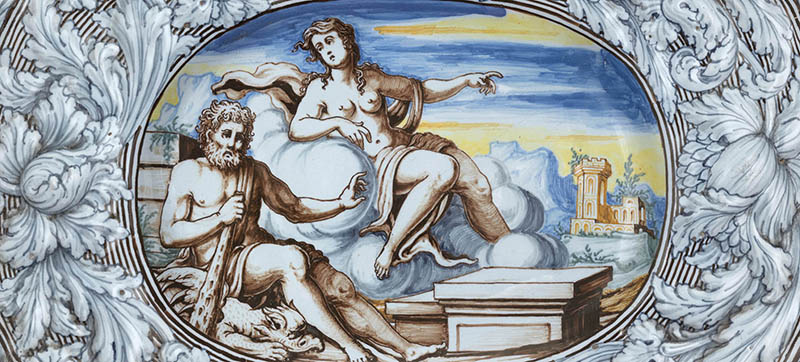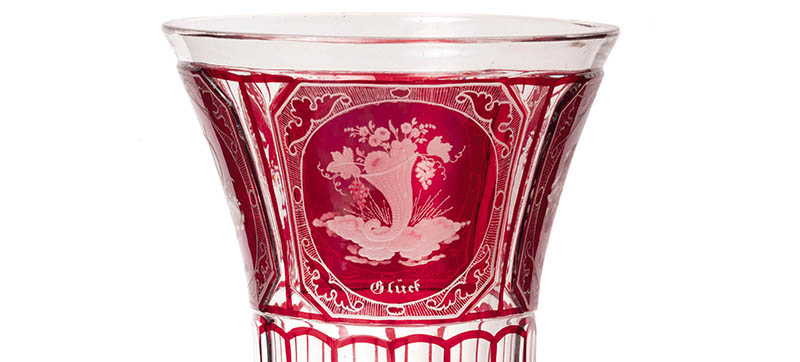The next sale of ceramics and glass, at Wannenes Auction House in Genoa on the 17th May next, will be offering up for sale, as tradition dictates, a highly varied selection of works from the Sixteenth to the Nineteenth centuries.
There are many pieces of maiolica including an exceptionally interesting allegorical dish from a bottega in Pavia from the beginning of the Eighteenth century and decorated by the much-celebrated painter, Sirio Antonio Africa, an artist who was emblematic of this magnificent ceramic manufactory, as witnessed in his mark. The artist also worked for the workshops of Rampini and Imbres, the two most important ones in Pavia during this particular span of time. The works that best exemplify his style are the so-called ‘latesini’ that are characterised by sophisticated embossed forms – taken from works in silver – and a paesi (“village”) decorations as well as baroque scenes. Working beside a talented moulder who was able to create elegant forms inspired by precious silverware, we may now witness the skill of Siro Antonio Africa, the most important painter of maiolica in Pavia at that time and who was responsible for much of the period’s decorated maiolica wares.
Nevertheless, the heart of the sale is most definitely made up of a refined private collection of glass, for the most part from Bohemia and made in the Austro-Hungarian Empire from the second quarter of the Nineteenth century. A fascinating selection that displays the great artistic and technical skills of glass-makers from that period (starting with Friedrich Egermann (1777-1864), a Saxon who had trained in Bohemia and who swiftly became a very important figure in the history of nineteenth-century glass in Europe).
The collection is made up of tankards, glasses, bottles and works in crystal often decorated in bright colours that were made from the beginning of the Nineteenth century onwards, such as, for example, a tall goblet in polished and carved crystal, decorated in ruby red with medallions finely cut with symbols and inscriptions from the first half of the Nineteenth century.
The forms are robust in appearance, almost sculptoreal, thanks to the opportunities offered for cutting and moulding this particular material. These works are also very often completed with engravings of the rarest and finest beauty. It is, without any shadow of doubt, the highly decorative impact of these glasses that makes them the object of collectors and collecting in Italy and abroad

Piatto da servizio in maiolica policroma con Ercole e Virtù, pittore Africa
Fornace di Pavia circa 1720
Stima € 1.900 – 2.200

